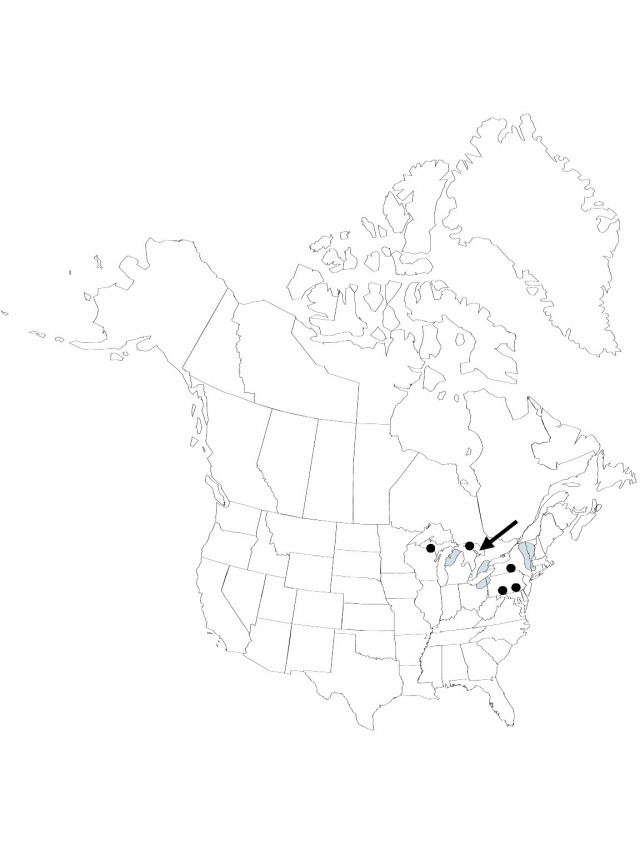Potamogeton hillii
Botanical Gazette 6: 290, fig. 3. 1881.
Rhizomes absent. Cauline stems slightly compressed, without spots, 30–60 cm; glands rare, when present, brown to green, 0.1–0.3 mm diam. Turions terminal, rare, 2.8–3 cm × 1.5–3 mm, soft; leaves 2-ranked; outer leaves 3–4 per side, base not corrugate, apex acute to apiculate; inner leaves undifferentiated. Leaves submersed, spirally arranged, sessile, delicate; stipules persistent, inconspicuous, convolute, free from blade, white to light-brown, not ligulate, 0.7–1.6 cm, slightly fibrous, rarely shredding at tip, apex obtuse; blade pale green to olive-green, linear, not arcuate, 2–6 cm × 0.6–2.5 (–4) mm, base slightly tapering, without basal lobes, not clasping, margins entire, not crispate, apex not hoodlike, apiculate to bristle-tipped or rarely blunt, lacunae in 1–2 rows each side of midrib; veins 3. Inflorescences unbranched, emersed; peduncles not dimorphic, axillary and/or terminal, erect to ascending, rarely recurved, slightly clavate, 6–13.5 mm; spikes not dimorphic, globose, (2–) 4–7 mm. Fruits brown to light greenish brown, ovoid to orbicular, turgid, sessile, abaxially and laterally keeled (3-keeled), 2.3–4 × 2–3.2 mm, lateral keels without points; beak erect, 0.3–0.7 mm; sides without basal tubercles; embryo with 1 full spiral. Chromosome number unknownnot available.
Phenology: Flowering and fruiting summer.
Habitat: Alkaline waters of marshes, ponds, lakes, and slow-moving streams
Elevation: 50–400 m
Distribution

Ont., Conn., Mass., Mich., N.Y., Ohio, Pa., Vt., Va., Wis.
Discussion
Potamogeton hillii is an easily recognized species either in fruit or when sterile. The leaf blade has a bristle tip and five or fewer veins. Those characters combined with the usual absence of nodal glands will separate this species from all other North American linear-leaved species. Ecologically, it is consistently found in more alkaline waters than any other North American pondweed. A study of 35 localities established the mean to be 124.1 mg/l CaCO3 (C. B. Hellquist 1984).
Selected References
Lower Taxa
"shortened" is not a number."not elongating" is not a number."less" is not a number.